How to Cook Fava Beans
on Feb 08, 2023, Updated Apr 03, 2024
This post may contain affiliate links. Please read our disclosure policy.
Buttery and nutty, fava beans are one of the most loved vegetables of spring.
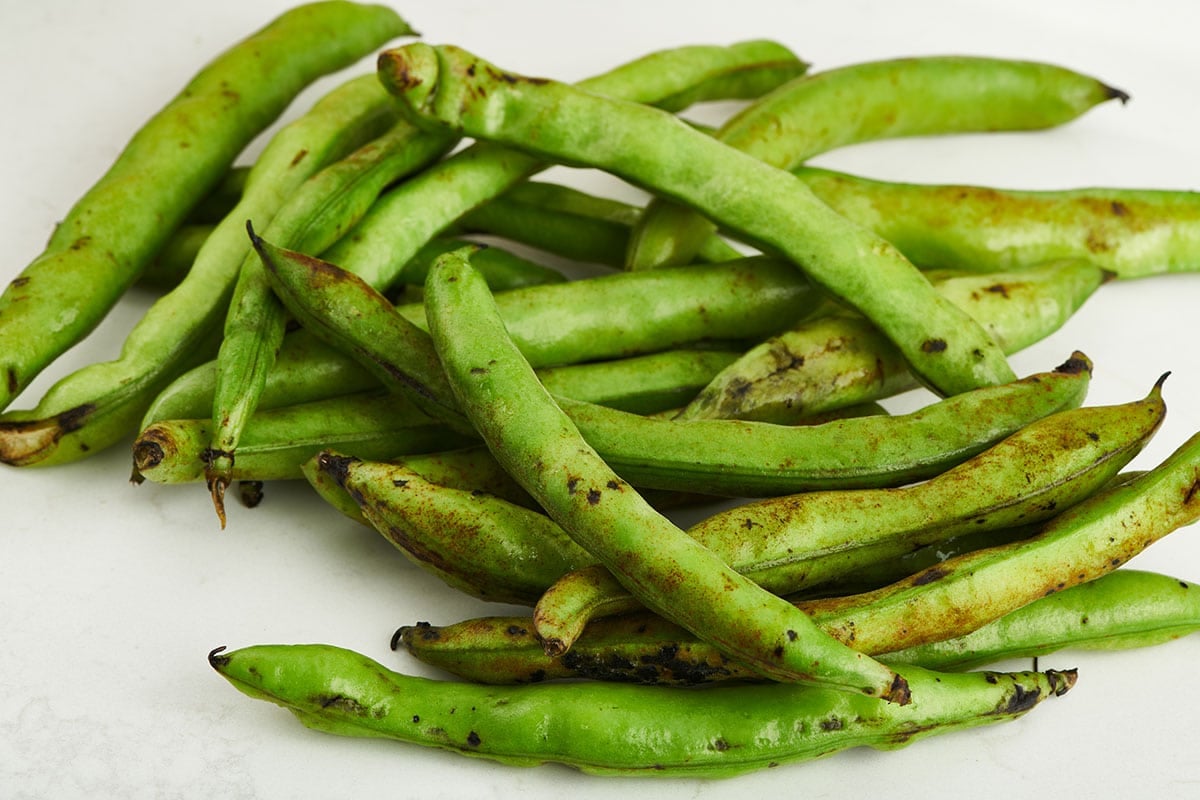
Fava beans, also known as broad beans, are at their most tender when they are in season in the spring. They are mildly flavored legumes that grow in bumpy greenish pods harvested from flowering pea plants. As they mature, they form a tough outer yellow-whitish skin around the beans within the pod that should be removed before eating. Cooking fresh fava beans is a bit of a labor-intensive process, but also kind of therapeutic. Blanching — meaning quickly cooking the beans in boiling water, then plunging them into cold water to stop the cooking — makes it easy to remove the tough skin, and enjoy tender fava beans.
Fava beans have been cultivated throughout the world for millennia. They were part of the cuisines of the ancient Greeks, Romans, and Egyptians. They are very popular throughout Europe, especially in Italy. Fava beans are also a big part of Middle Eastern cooking.
Table of Contents
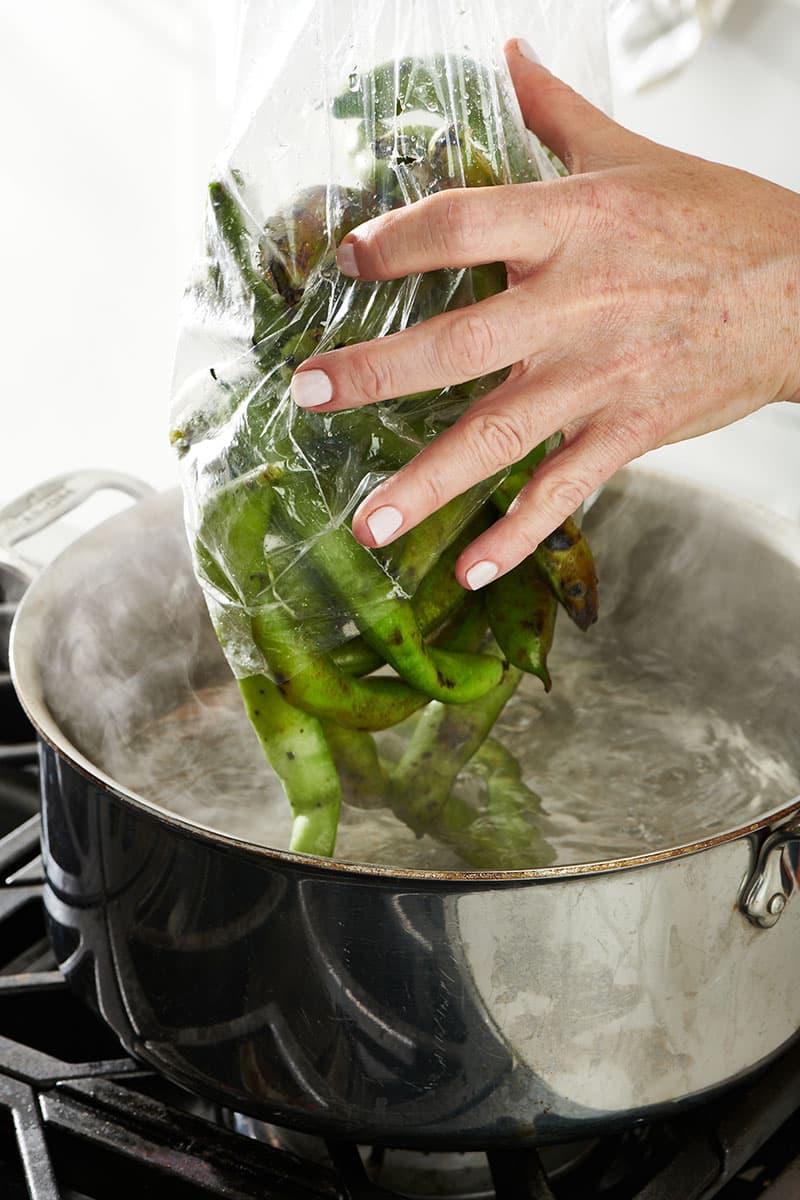
What Do Fava Beans Taste Like?
The flavor is buttery and nutty and very vegetal. There is a slight appealing bitterness as well. The younger beans are milder in flavor, as well as more tender.
How to Cook Fresh Fava Beans
Fresh fava beans can be boiled or steamed. They can be added to soups, stews, and salads (including this chickpea and fava bean salad). Sautéing fava beans is the easiest way to make a simple side dish out of them. When very young and tender, they don’t have to have the outer white layer peeled off. If they are VERY young and tender, they can also be eaten raw, and the pods can be eaten as well.
You can use fava beans in dips and purees. You’ll still want to blanch them first to make removing the white skin from the beans easier.
How to Shell Fava Beans
You can shell fava beans from their pods before or after you cook them. Below are instructions for cooking the beans in their pods and then shelling them. However, if you want to shell the beans first and then blanch them, you can. You will peel off the tough white skin after cooking them whether or not you shell the beans from the pods first.
To shell the beans, you can snap off the stem end of the pod and then pull the string down the side to open the pods. Or you can use a small, sharp knife to carefully cut down the seam of the bean, open it, and remove the beans.
Once shelled, fresh fava beans generally need to be peeled before using them in recipes. This is easy to do by blanching them, and below are the instructions for doing just that. However, if you are lucky enough to get very young fava beans, the skins are tender enough to be edible. You’ll have the best chance of finding young fava beans in early spring. The skin of the fava bean must be green for it to be tender enough to eat; if it is yellow or yellowing, it will be too tough.
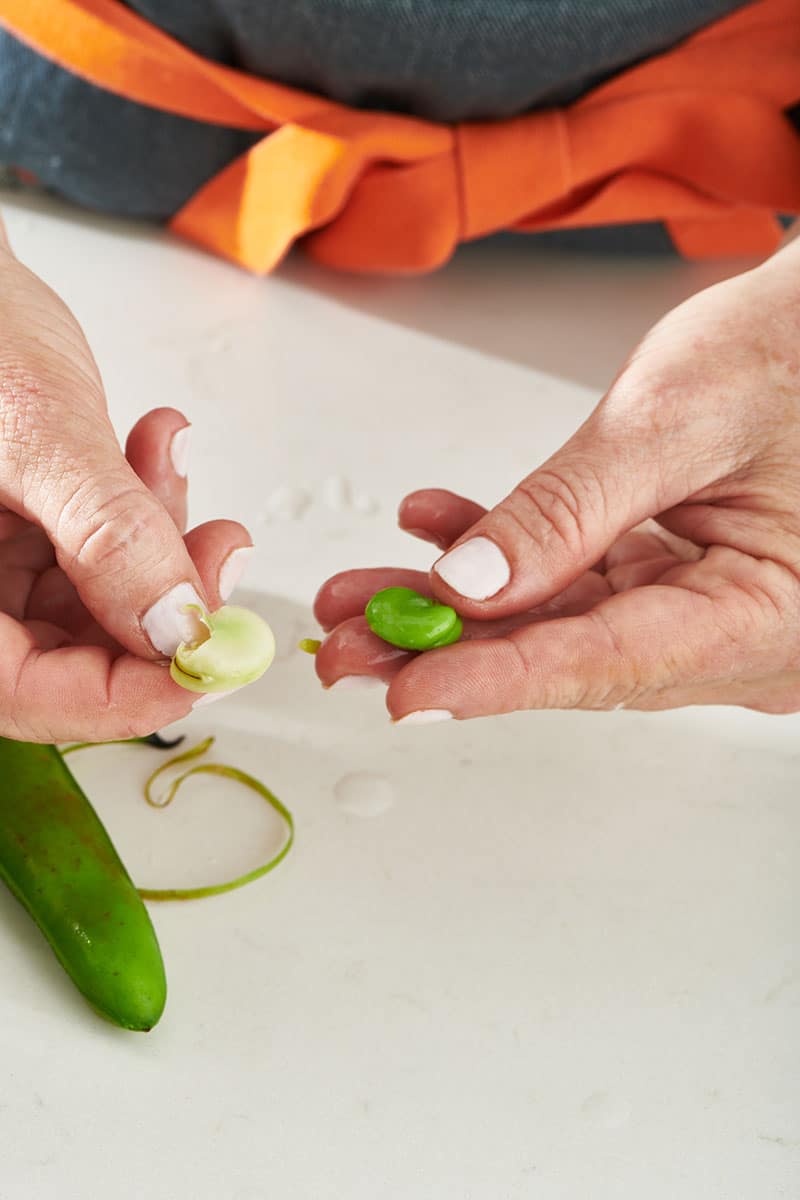
How to Prepare Fresh Fava Beans
These directions are for blanching the beans in the pod and then shelling and peeling them. Blanching the whole pods makes it easier to open them. However, you can also shell the beans first and then blanch them. Either way, you will peel off the tough white skin after blanching them.
- Fill a large bowl with ice water. Bring a pot of water to a boil. Drop the pods into the boiling water. Boil for 30 seconds. Drain the pods.
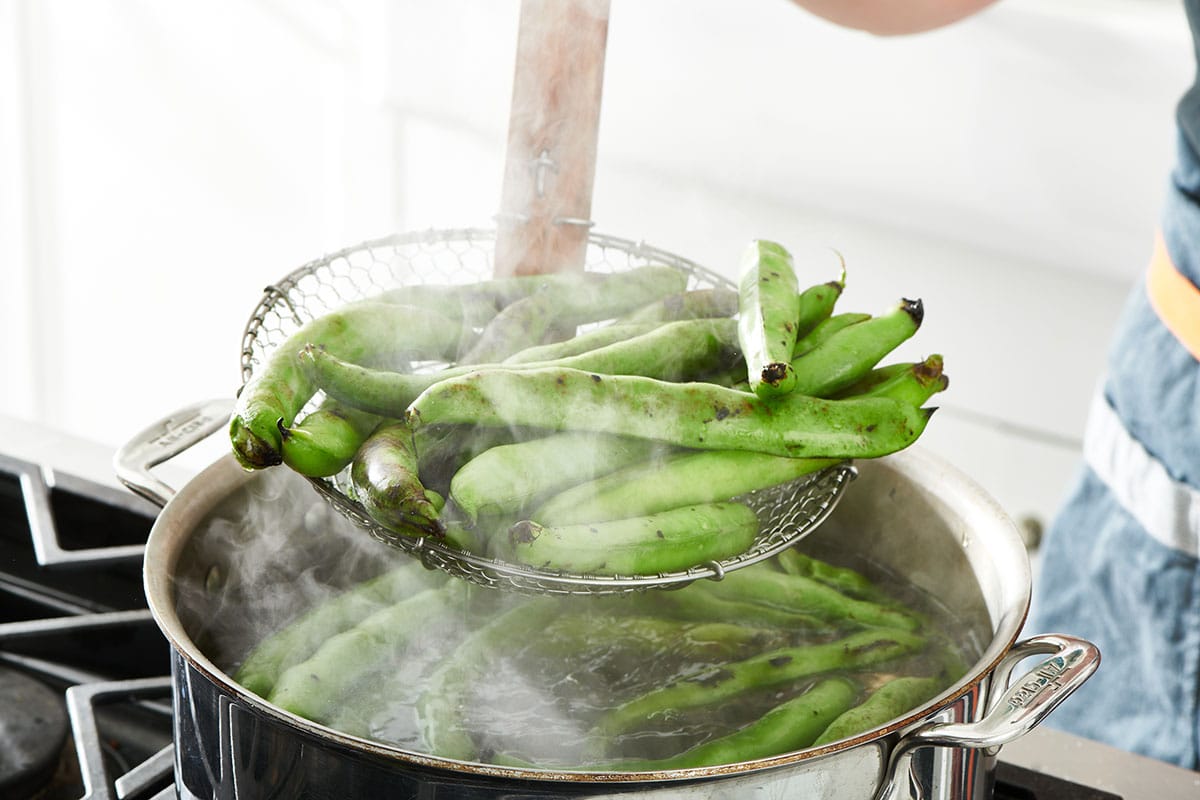
- Submerge the pods in the ice bath. Let them sit for a few minutes until chilled.
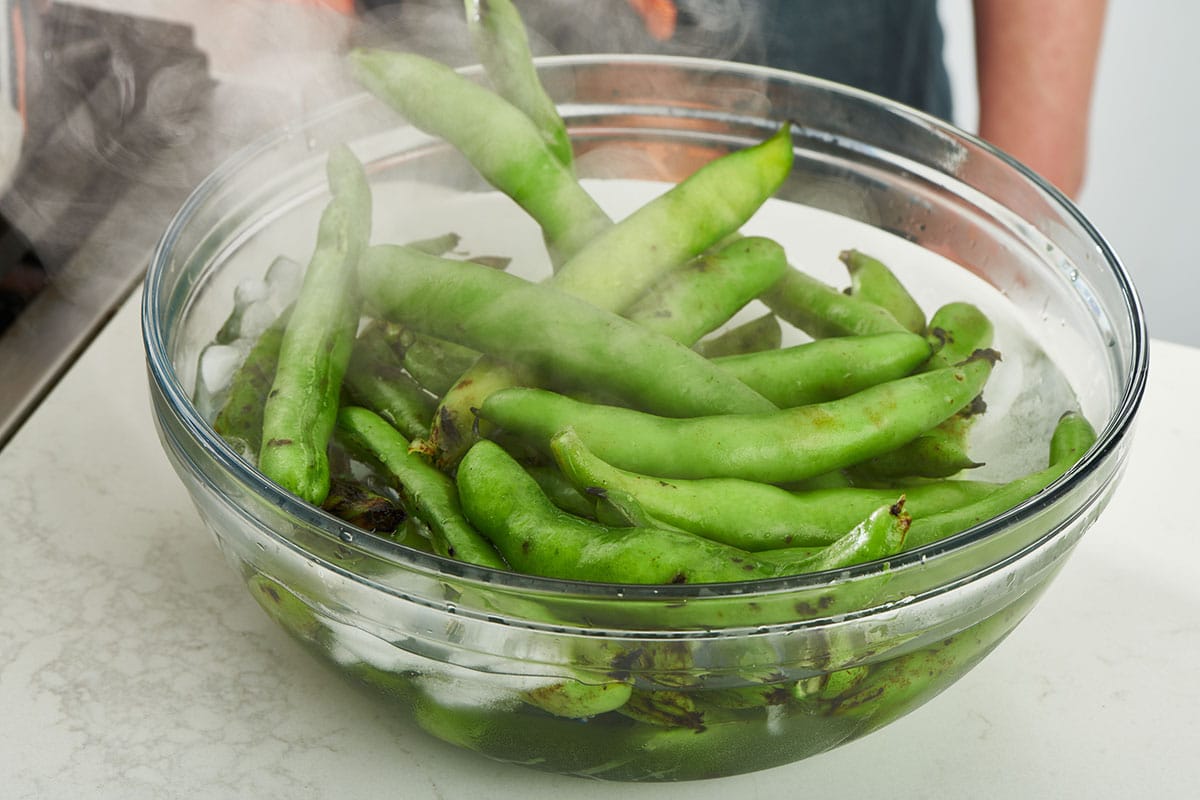
- Snap one end of the shell and pull the string down the seam of the pod to open the pod. There will be about 4 or 5 beans inside. Remove the beans.
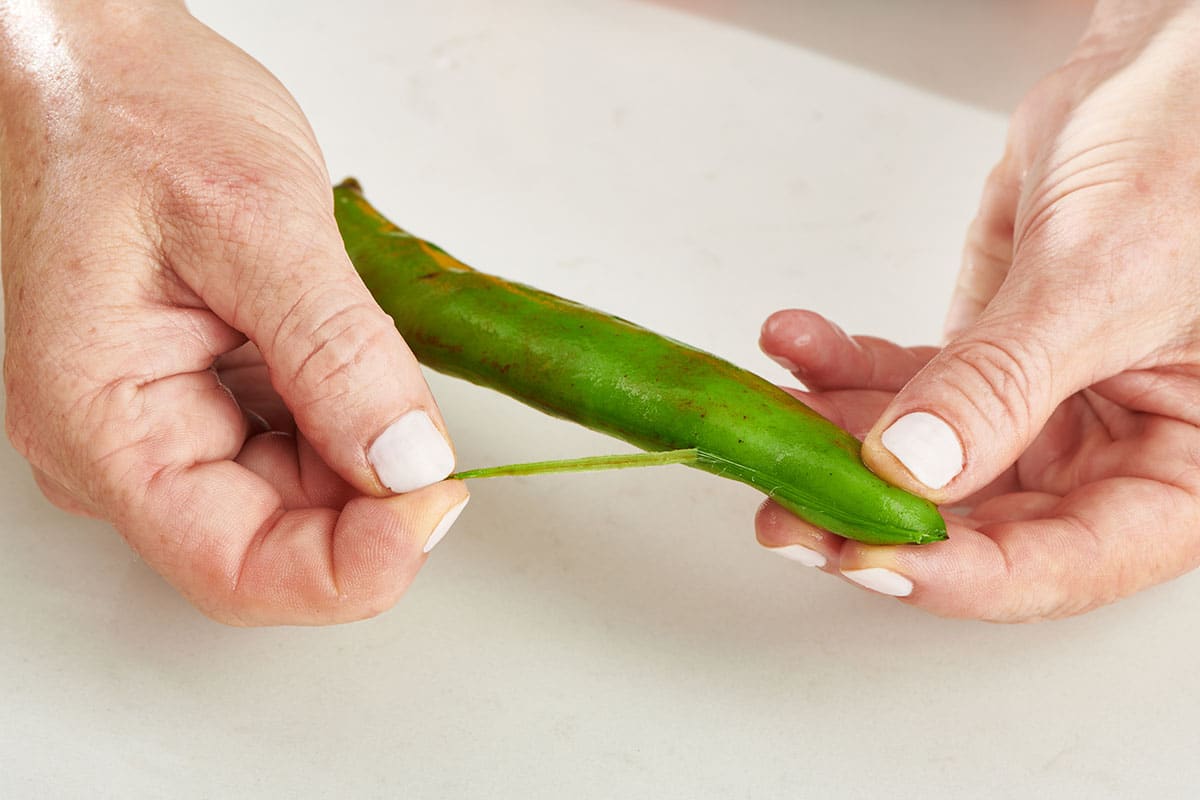
- Slip the skins off by pinching them and sliding them off of each bean. Then proceed with your recipe. After this quick blanching, the beans will be just barely crisp-tender, and you can use them as is in salads.
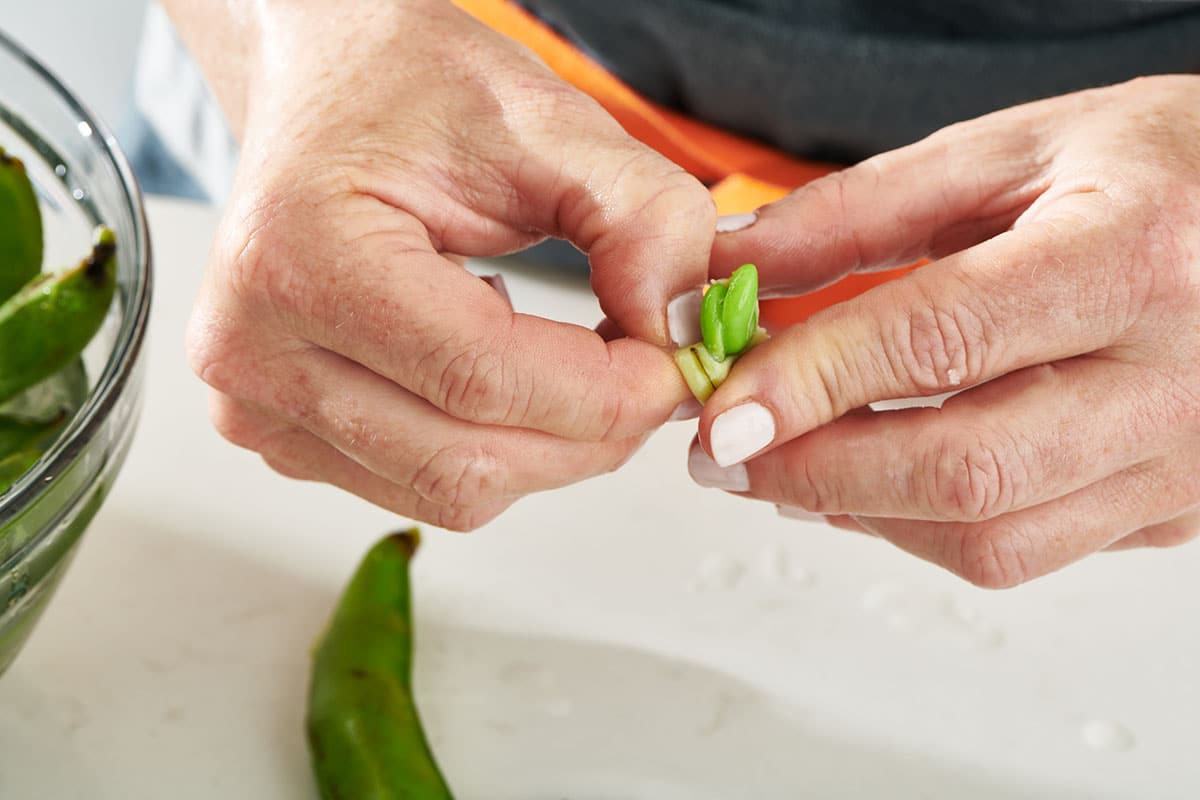
- If you want more tender beans, just cook them for longer; up to 5 minutes, for very tender favas. But if you are going to add them to a recipe that requires more cooking time, all you need is the 30 seconds of blanching to make it easier to remove the skins before proceeding with the rest of the recipe.
Fava Bean Yields
Because fava beans come in such large bulky pods, it can be difficult to know how many shelled fava beans you’ll end up with after all is said and done. The measurements and conversations in the charts below are estimates, as different pods will yield different results. There will usually be 4 or 5 beans inside each pod, and 1 pound of pods typically yields around 3/4 cup of shelled beans.
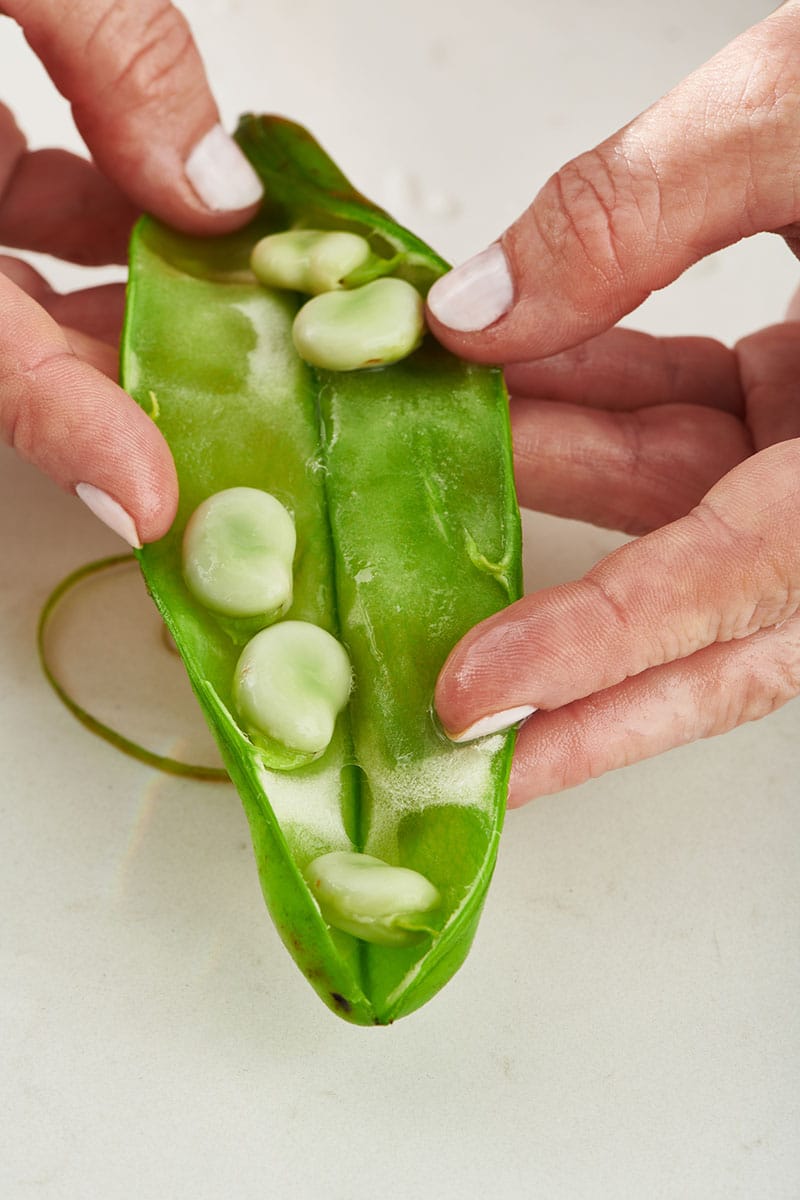
Also, the more mature the pods are, the larger the beans, so the more you will get per pound. However, the skins definitely need to be removed for the larger beans, and the more mature they are, the thicker the skins. So when you remove the thicker skins, there will be a more notable loss of volume. Use the following equivalents as a guideline.
Shelled Fava Beans Per Pound of Pods
| Fava Beans in the Pod | Shelled Fava Beans |
| 1 pound | about 3/4 cup |
| 2 pounds | about 1 1/2 cups |
| 3 pounds | about 2 1/4 cups |
| 4 pounds | about 3 cups |
Weight of Shelled Fava Beans in Pounds
| Shelled Fava Beans (Weight) | Shelled Fava Beans (Volume) |
| 1/2 pound | about 2 cups |
| 3/4 pound | about 3 cups |
| 1 pound | about 3 3/4 cups |
How to Cook Fava Beans: Buttery and nutty, fava beans are one of the most loved vegetables of spring. Here’s how to get them perfectly tender!
Tweet This
Allergies and Nutrition
Be aware of any intolerances or allergies to fava beans. Some people of African, Southeast Asian, and Mediterranean descent can have an enzyme deficiency that causes a severe reaction. There are some other conditions that can become complicated by eating fava beans, like Parkinson’s disease. Something to know!
For those of us lucky enough to enjoy them, fava beans are quite nutritious. They are high in protein, folate, and fiber. They are also rich in potassium, magnesium, vitamin C, copper, and calcium.
Pin this now to find it later
Pin It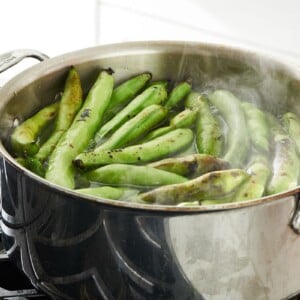
How to Cook Fresh Fava Beans
Ingredients
- 1 pound fresh fava beans
- Water (as needed)
Instructions
- Fill a large bowl with ice water. Bring a pot of water to a boil.
- Drop the pods into the boiling water. Boil for 30 seconds.
- Drain the pods and submerge the pods in the ice bath. Let them sit for a few minutes until chilled.
- Snap one end of the shell and pull the string down the seam of the pod to open the pod. There will be about 4 or 5 beans inside. Remove the beans.
- Slip the skins off by pinching them and sliding them off of each bean. Then proceed with your recipe.
- After this quick blanching, the beans will be just barely crisp-tender, and you can use them as is in salads.
- If you want more tender beans, just cook them longer, up to 5 minutes, for very tender fava. But if you are going to add them to a recipe that includes more cooking time, all you need is the 30 seconds of blanching to make it easier to remove the skins before proceeding with the rest of the recipe.

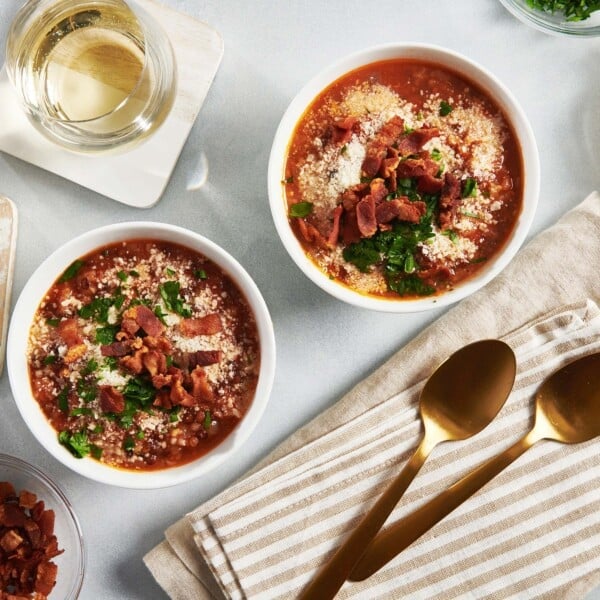











I have not made this yet – local markets are inundated with Favas in pods, but I can’t get the procedure for how to peel the beans on this page, the ads are interfering! Do you boil the whole pod (too late, I already shelled them unknowingly) so now that they’re out of the pod, what next? Thank you.
We are not seeing any issues on visibility on our end, Iris! Please let us know if you still are – meanwhile, you can definitely boil the beans once shelled, no problem,. Then peel off the skins.